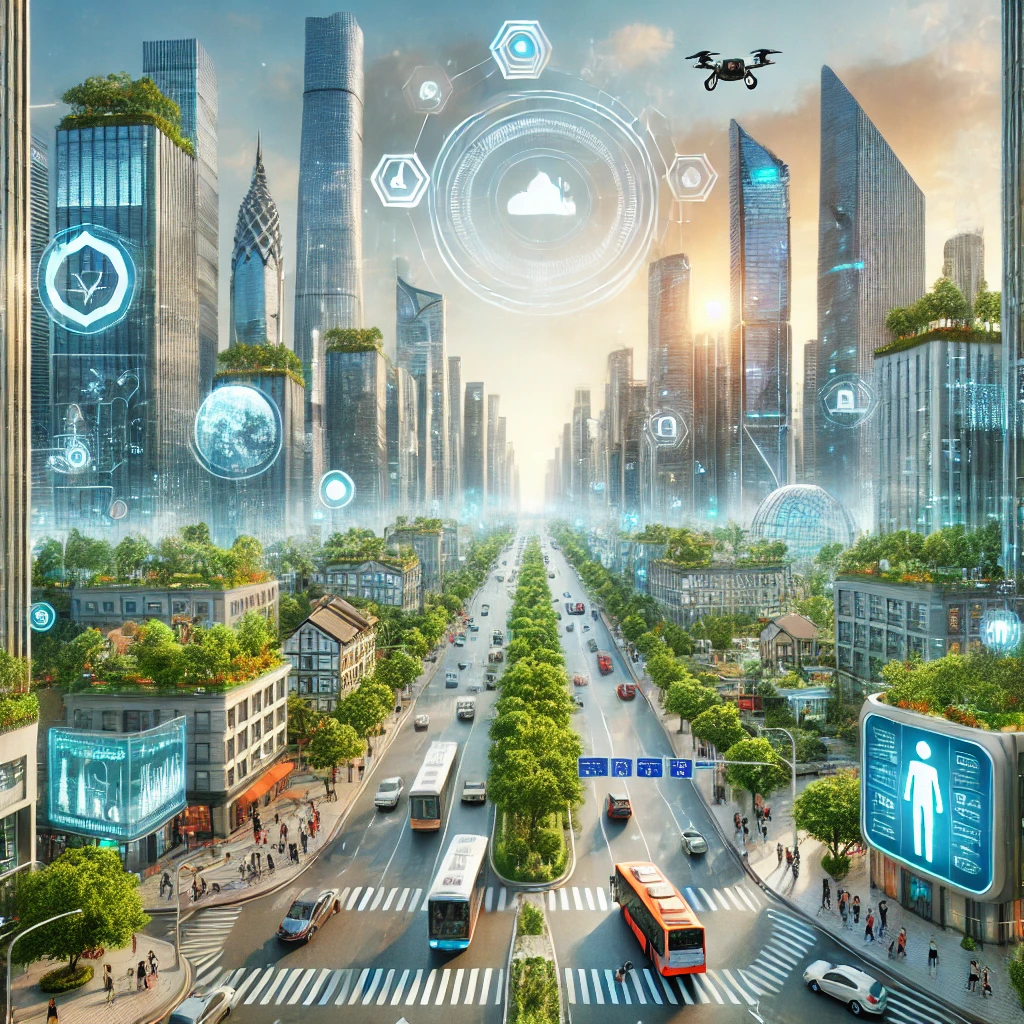Table of Contents

Introduction
Japan has long been recognized as a global leader in technology and innovation, particularly in the fields of artificial intelligence (AI) and robotics. The nation’s pursuit of groundbreaking developments has positioned it as a hub for technological advancements, characterized by a unique blend of cultural respect for tradition and an unyielding drive for progress. Over the decades, Japan has made significant strides in the realm of robotics, producing a wealth of innovations ranging from industrial robots that enhance manufacturing efficiency to humanoid robots that engage in social interaction and serve various functions in everyday life.
One of the hallmarks of Japanese innovation is its ability to integrate cutting-edge AI systems within these robotic frameworks, allowing for enhanced adaptability and functionality. These developments are not just a testament to Japan’s engineering prowess but also reflect a broader commitment to improving quality of life through technological enhancements. For instance, AI has become integral in various industries such as healthcare, where it assists in diagnostics and patient care, further emphasizing Japan’s role as a pioneer in employing technology to meet societal needs.
Moreover, the global landscape is increasingly shaped by technological advancements, creating an intricate interplay between nations vying for leadership. Japan’s investment in AI research and development, coupled with its robust educational system that promotes STEM (science, technology, engineering, and mathematics), ensures a continuous flow of innovative ideas and solutions. In turn, these factors have significant implications for Japan’s economic future and its ability to compete on a global scale. As we delve deeper into the future prospects of Japanese innovation, it becomes imperative to explore how these advancements in AI and robotics will evolve and their potential impact across various sectors.
Historical Context of Japanese Innovation
Japan’s journey into becoming a leader in technology and robotics is deeply rooted in its historical developments. Following the devastation of World War II, Japan experienced a remarkable economic boom, which laid the groundwork for its ascent as a technological powerhouse. This era marked a pivotal shift as the nation focused on industrialization and modernization, leveraging its educated workforce and disciplined work ethic.
In the years following the war, the government played a crucial role in fostering innovation through various policies and initiatives. The establishment of the MITI (Ministry of International Trade and Industry) in 1949 was instrumental in guiding Japan’s economic strategy. MITI actively coordinated between government and industries, providing support in research and development while encouraging the adoption of advanced technologies. This framework allowed Japanese companies to thrive and innovate, particularly in sectors such as electronics and manufacturing.
The cultural dimensions of Japanese society also contributed significantly to the innovation landscape. Concepts such as “kaizen,” which emphasizes continuous improvement, fostered an environment where innovation and efficiency became cornerstones of industry practices. The cultural values of perseverance and teamwork further encouraged collaboration among engineers and researchers, which facilitated creative problem-solving and led to numerous breakthroughs.
Furthermore, Japan’s strong emphasis on education, particularly in STEM fields, has resulted in a highly skilled workforce that is well-equipped to engage with cutting-edge technologies. Institutions and researchers often work closely with industries, promoting a synergy that drives innovation forward. This convergence of historical economic strategies, governmental policies, and cultural factors has propelled Japan into a prominent position in the realm of robotics and AI development, setting the stage for the technological advancements we observe today.

Current Innovations in AI and Robotics
Japan has long been a pioneer in the fields of artificial intelligence (AI) and robotics, and current innovations continue to establish the nation as a global leader in these transformative technologies. Major corporations and research institutions are dedicating significant resources to advancing capabilities that not only enhance productivity but also improve the quality of life worldwide.
One groundbreaking development can be observed in humanoid robotics. Companies like SoftBank Robotics have introduced advanced robots such as Pepper, which utilize AI for social interaction and emotional recognition. These robots are increasingly being adopted in retail and customer service sectors to enhance user experience. Their ability to engage in meaningful conversations with customers illustrates a remarkable step toward creating machines that can understand and respond to human emotions.
Additionally, the automotive industry in Japan is seeing rapid advances in autonomous vehicles. Leading car manufacturers, such as Toyota and Honda, are actively working on AI-driven technologies that facilitate self-driving functionality. These innovations hold the promise of not only revolutionizing transportation but also significantly reducing traffic accidents and improving traffic efficiency. By integrating AI systems that continuously learn from various driving scenarios, these vehicles are becoming safer and more reliable.
In the healthcare sector, AI is being leveraged to enhance diagnostics and treatment options. Research institutions are developing AI algorithms capable of analyzing medical imaging with precision, allowing for early detection of diseases like cancer. Furthermore, AI-driven systems are being designed to assist healthcare professionals in making data-informed decisions, ultimately leading to improved patient outcomes.
Through these innovations, Japan is exemplifying how the integration of AI and robotics can profoundly impact daily life, industry practices, and healthcare systems. As these technologies continue to evolve, Japan’s commitment to leading in AI and robotics will likely yield significant advancements that resonate on a global scale.
Challenges Facing Japanese Innovation
Japan, a nation renowned for its technological advances and innovations, encounters several challenges that could impede its future progress, particularly in the realms of artificial intelligence (AI) and robotics. One of the most pressing issues is the aging population. As the demographic landscape of Japan shifts, the workforce is shrinking, creating a gap in the availability of skilled labor force that is essential for pioneering advancements in technology. This phenomenon not only limits the number of individuals contributing to innovative projects but also increases the demand for automation and robotics to support an economy facing labor shortages.
Additionally, Japan’s bureaucratic landscape presents substantial obstacles to innovation. The country’s regulatory framework can often be slow and cumbersome, making it difficult for startups and small companies to navigate the pathways necessary for bringing new technologies to market. The reliance on traditional business practices may hinder adaptability and responsiveness to the rapid changes in the tech landscape, thereby stifling creativity and innovation. In contrast, many international competitors have fostered more agile environments that encourage experimentation and quicker execution of new ideas, allowing them to gain an edge in the global market.
Moreover, Japan faces increasing competition from global tech giants that possess significant resources and expertise. Companies from the United States and China, in particular, have rapidly advanced in AI and robotics, raising the stakes for Japan’s technological aspirations. These competitors benefit from vast investments and a workforce skilled in contemporary technologies, challenging Japan to reevaluate its strategies in innovation to remain relevant in an increasingly interconnected global market.
While these challenges are significant, they also present opportunities for reform and transformation in Japan’s approach to innovation. Adapting to these obstacles will be crucial for the future vitality of Japan’s technology sector.
Investment in R&D: The Driving Force
Investment in research and development (R&D) serves as a fundamental pillar within Japan’s innovation landscape, playing a vital role in the nation’s ability to keep pace with global advancements in technology. Both government initiatives and private sector involvement are critical in fostering an environment conducive to innovative breakthroughs. Over recent years, the Japanese government has taken proactive measures by allocating substantial resources to R&D, aiming to enhance competitive advantage and stimulate economic growth. This strategic commitment underscores the urgency for Japan to maintain its status as a leader in technology and innovation.
Moreover, the collaboration between academia and industry has emerged as a significant driver of R&D activities in Japan. By facilitating partnerships that harness the strengths of both sectors, innovative ideas can be transformed into practical applications more efficiently. Universities and research institutions engage with private firms to share knowledge and resources, which enhances technology transfer and accelerates the commercialization of inventive solutions. Such collaboration not only elevates Japan’s technological capabilities but also ensures that advancements align with market needs and consumer expectations.
In the private sector, numerous corporate giants and startups alike are committing substantial investments into R&D, especially in fields such as artificial intelligence, robotics, and renewable energy technologies. Companies recognize that sustainable innovation is critical for maintaining their competitive edge in a rapidly changing global market. By fostering a culture that prioritizes R&D, these firms contribute significantly to Japan’s ongoing technological evolution and position the country as a formidable player in the international arena.
The impact of funding on innovation outcomes cannot be overstated. Enhanced investment in R&D not only leads to breakthrough innovations but also generates employment and drives economic prosperity. Ultimately, the synergy between government support, private sector investment, and academic collaboration establishes a robust foundation for the future of Japanese innovation.

The Role of Education and Workforce Development
Japan’s ability to sustain its innovation in artificial intelligence (AI) and robotics is deeply intertwined with its education and workforce development systems. At the heart of this evolution lies a strong emphasis on STEM (Science, Technology, Engineering, and Mathematics) education, which serves as the foundation for budding talent in these high-tech fields. The Japanese government has recognized that cultivating expertise in STEM disciplines is crucial for maintaining the country’s competitive edge in global markets driven by technological advancements.
Technical training programs are also pivotal in bridging the gap between educational institutions and the workforce’s real-world requirements. These programs focus on enhancing the practical skills of students, ensuring they are well-prepared to meet the demands of employers in the AI and robotics sectors. For instance, many vocational schools and community colleges in Japan offer specialized courses that teach students the intricacies of machine learning, programming, and robotics, equipping them with the necessary skills to thrive in a rapidly evolving job landscape.
Moreover, various initiatives aimed at encouraging young people to consider careers in AI and robotics are being implemented across the nation. Government campaigns, corporate partnerships, and industry workshops collectively aim to inspire interest among youth in these fields. These efforts not only highlight the potential of innovation but also underscore the importance of career development within Japan’s technological ecosystem. Collaborations between schools, universities, and tech companies create pathways for students, providing them with internships and mentorship opportunities that are critical for their professional growth.
Ultimately, a robust education and workforce development framework plays a vital role in preparing Japan’s future talent for the technological demands ahead. By investing in STEM education and training, Japan can ensure that it continues to innovate and lead in the realms of AI and robotics, securing its position as a technological powerhouse in the years to come.
The Societal Impact of AI and Robotics
The integration of artificial intelligence (AI) and robotics into Japanese society has begun to reshape various factors, including employment, daily life, and social structures. As these technologies advance, their influence permeates multiple sectors, presenting both opportunities and challenges for individuals and communities. The workforce landscape, in particular, is undergoing a significant transformation, as automation becomes an integral part of various industries.
One of the most pronounced effects of AI and robotics is the potential for job displacement. As machines take over repetitive and mundane tasks, many workers may find themselves facing unemployment or the need to re-skill for new roles. Conversely, the introduction of AI in the workplace may create new job opportunities in fields such as AI management, maintenance, and programming. This duality of impact demands attention from policymakers, educators, and industry leaders to strike a balance between technological advancement and workforce stability.
Moreover, AI and robotics have the potential to enhance the quality of life in Japan. Smart technologies can improve healthcare, transportation, and home living, allowing individuals to live more independently and comfortably. For instance, AI-driven health monitoring systems can provide personalized care, enabling older adults to maintain autonomy while receiving crucial support. Additionally, robotic systems can aid in household chores, allowing families to allocate their time more effectively.
However, the swift adoption of these technologies raises substantial concerns regarding privacy and data security. As AI systems collect and analyze personal data to function efficiently, the potential for misuse of information looms large. Ensuring that privacy protections are robust and that users’ data is securely managed is essential to foster public trust and encourage the continued integration of AI and robotics into everyday life.
In conclusion, the societal impact of AI and robotics in Japan is multifaceted, with the promise of improved efficiency and quality of life tempered by significant challenges related to employment and privacy. Addressing these concerns is crucial for ensuring that technological advancements benefit all members of society while promoting sustainable economic growth.
Future Trends and Predictions
The landscape of Japanese innovation is poised for significant transformation, particularly in the fields of artificial intelligence (AI) and robotics. As we look towards the next decade, experts anticipate a surge in advancements that will not only enhance productivity but also revolutionize various industries. One of the crucial trends expected to emerge is the deepening integration of AI technologies into everyday applications, which will enable businesses to optimize their operations and minimize human error.
Moreover, the expected advancements in robotics are likely to redefine labor dynamics across multiple sectors. In fields such as manufacturing and healthcare, robots equipped with sophisticated AI capabilities will perform tasks that were previously considered too complicated or dangerous for human workers. This trend is expected to prompt significant changes in workforce composition, requiring an emphasis on retraining and upskilling programs for employees displaced by automation.
Experts also highlight the potential breakthroughs in human-robot interactions. As robots become more intelligent and intuitive, they are anticipated to engage in more nuanced conversations and collaborate seamlessly with humans. This advancement will lead to the development of personalized experiences, especially in customer service and care roles. The use of AI chatbots and robotic assistants is expected to become commonplace in promoting efficiency while enhancing user experience.
In addition, emerging developments in AI ethics and governance will shape the future trajectory of innovation in Japan. Policymakers are likely to focus on creating frameworks to ensure responsible AI usage, balancing innovation with societal values. By aligning technological advancement with ethical considerations, Japan can position itself as a global leader not only in innovation but also in the ethical use of AI and robotics.
As these trends unfold, the transformative power of AI and robotics will undoubtedly reshape industries, present new challenges, and create vast opportunities for growth within the Japanese market and beyond.
Conclusion
In summarizing the discussion on the future of Japanese innovation, particularly in the realms of artificial intelligence (AI) and robotics, it is clear that Japan holds a pivotal position as a global leader. The nation’s rich history of technological advancements is complemented by its relentless pursuit of innovation, which has established a robust framework for AI and robotic developments. From pioneering humanoid robots to sophisticated AI applications, Japan showcases a commitment to harnessing technology to improve the quality of life for its citizens and address societal challenges.
However, as Japan strides forward in these fields, it faces several challenges including an aging population, a declining workforce, and increasing international competition in technology. These hurdles necessitate adaptive strategies that encompass not only the advancement of technology but also policies that encourage collaboration between government, industry, and academia. Such partnerships can stimulate the exchange of ideas, foster research and development, and ensure that the benefits of innovation are widely distributed. Furthermore, addressing ethical considerations and regulatory frameworks will be crucial for safely integrating AI and robotics into everyday life.

Despite these challenges, the opportunities for growth and expansion in AI and robotics are substantial. Advancements in these sectors can lead to transformative solutions, ranging from enhanced productivity in industries to improved healthcare services. By fostering a culture of innovation, Japan can leverage its technological expertise and maintain its status as a pioneer on the global stage. Continuous investment in research and development, alongside an inclusive approach to innovation, will be vital for Japan to navigate the complexities of the technological landscape that lies ahead.





